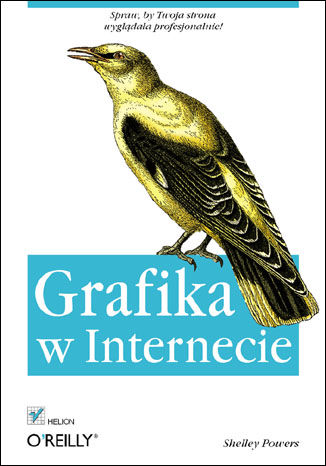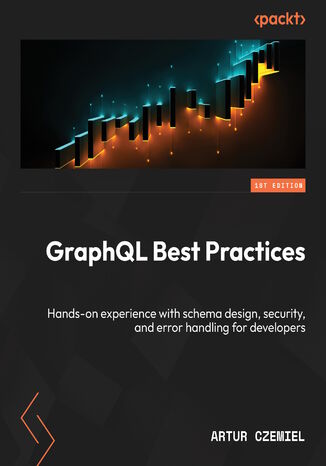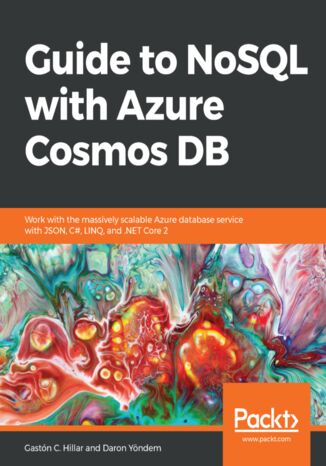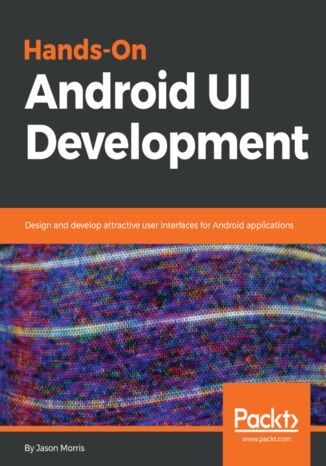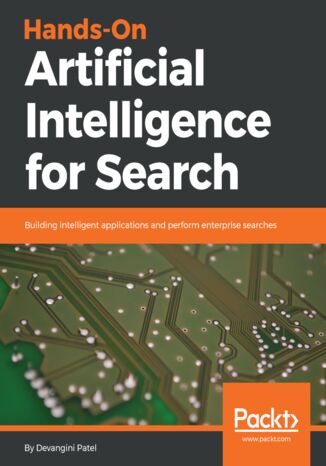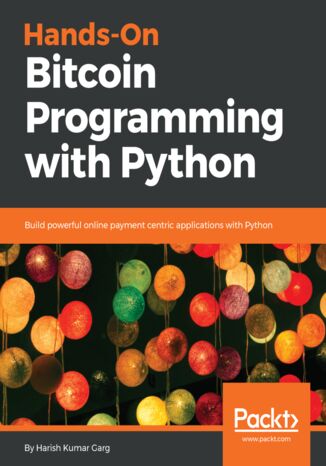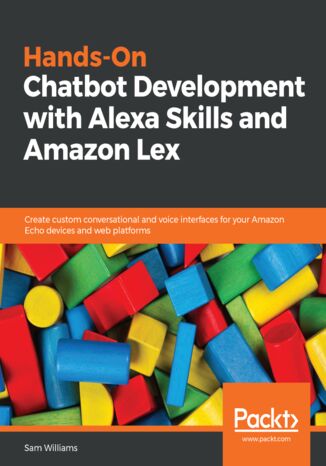Categories
Ebooks
-
Business and economy
- Bitcoin
- Businesswoman
- Coaching
- Controlling
- E-business
- Economy
- Finances
- Stocks and investments
- Personal competence
- Computer in the office
- Communication and negotiation
- Small company
- Marketing
- Motivation
- Multimedia trainings
- Real estate
- Persuasion and NLP
- Taxes
- Social policy
- Guides
- Presentations
- Leadership
- Public Relation
- Reports, analyses
- Secret
- Social Media
- Sales
- Start-up
- Your career
- Management
- Project management
- Human Resources
-
For children
-
For youth
-
Education
-
Encyclopedias, dictionaries
-
E-press
- Architektura i wnętrza
- Health and Safety
- Biznes i Ekonomia
- Home and garden
- E-business
- Ekonomia i finanse
- Esoterecism
- Finances
- Personal finance
- Business
- Photography
- Computer science
- HR & Payroll
- For women
- Computers, Excel
- Accounts
- Culture and literature
- Scientific and academic
- Environmental protection
- Opinion-forming
- Education
- Taxes
- Travelling
- Psychology
- Religion
- Agriculture
- Book and press market
- Transport and Spedition
- Healthand beauty
-
History
-
Computer science
- Office applications
- Data bases
- Bioinformatics
- IT business
- CAD/CAM
- Digital Lifestyle
- DTP
- Electronics
- Digital photography
- Computer graphics
- Games
- Hacking
- Hardware
- IT w ekonomii
- Scientific software package
- School textbooks
- Computer basics
- Programming
- Mobile programming
- Internet servers
- Computer networks
- Start-up
- Operational systems
- Artificial intelligence
- Technology for children
- Webmastering
-
Other
-
Foreign languages
-
Culture and art
-
School reading books
-
Literature
- Antology
- Ballade
- Biographies and autobiographies
- For adults
- Dramas
- Diaries, memoirs, letters
- Epic, epopee
- Essay
- Fantasy and science fiction
- Feuilletons
- Work of fiction
- Humour and satire
- Other
- Classical
- Crime fiction
- Non-fiction
- Fiction
- Mity i legendy
- Nobelists
- Novellas
- Moral
- Okultyzm i magia
- Short stories
- Memoirs
- Travelling
- Narrative poetry
- Poetry
- Politics
- Popular science
- Novel
- Historical novel
- Prose
- Adventure
- Journalism, publicism
- Reportage novels
- Romans i literatura obyczajowa
- Sensational
- Thriller, Horror
- Interviews and memoirs
-
Natural sciences
-
Social sciences
-
School textbooks
-
Popular science and academic
- Archeology
- Bibliotekoznawstwo
- Cinema studies
- Philology
- Polish philology
- Philosophy
- Finanse i bankowość
- Geography
- Economy
- Trade. World economy
- History and archeology
- History of art and architecture
- Cultural studies
- Linguistics
- Literary studies
- Logistics
- Maths
- Medicine
- Humanities
- Pedagogy
- Educational aids
- Popular science
- Other
- Psychology
- Sociology
- Theatre studies
- Theology
- Economic theories and teachings
- Transport i spedycja
- Physical education
- Zarządzanie i marketing
-
Guides
-
Game guides
-
Professional and specialist guides
-
Law
- Health and Safety
- History
- Road Code. Driving license
- Law studies
- Healthcare
- General. Compendium of knowledge
- Academic textbooks
- Other
- Construction and local law
- Civil law
- Financial law
- Economic law
- Economic and trade law
- Criminal law
- Criminal law. Criminal offenses. Criminology
- International law
- International law
- Health care law
- Educational law
- Tax law
- Labor and social security law
- Public, constitutional and administrative law
- Family and Guardianship Code
- agricultural law
- Social law, labour law
- European Union law
- Industry
- Agricultural and environmental
- Dictionaries and encyclopedia
- Public procurement
- Management
-
Tourist guides and travel
- Africa
- Albums
- Southern America
- North and Central America
- Australia, New Zealand, Oceania
- Austria
- Asia
- Balkans
- Middle East
- Bulgary
- China
- Croatia
- The Czech Republic
- Denmark
- Egipt
- Estonia
- Europe
- France
- Mountains
- Greece
- Spain
- Holand
- Iceland
- Lithuania
- Latvia
- Mapy, Plany miast, Atlasy
- Mini travel guides
- Germany
- Norway
- Active travelling
- Poland
- Portugal
- Other
- Przewodniki po hotelach i restauracjach
- Russia
- Romania
- Slovakia
- Slovenia
- Switzerland
- Sweden
- World
- Turkey
- Ukraine
- Hungary
- Great Britain
- Italy
-
Psychology
- Philosophy of life
- Kompetencje psychospołeczne
- Interpersonal communication
- Mindfulness
- General
- Persuasion and NLP
- Academic psychology
- Psychology of soul and mind
- Work psychology
- Relacje i związki
- Parenting and children psychology
- Problem solving
- Intellectual growth
- Secret
- Sexapeal
- Seduction
- Appearance and image
- Philosophy of life
-
Religion
-
Sport, fitness, diets
-
Technology and mechanics
Audiobooks
-
Business and economy
- Bitcoin
- Businesswoman
- Coaching
- Controlling
- E-business
- Economy
- Finances
- Stocks and investments
- Personal competence
- Communication and negotiation
- Small company
- Marketing
- Motivation
- Real estate
- Persuasion and NLP
- Taxes
- Social policy
- Guides
- Presentations
- Leadership
- Public Relation
- Secret
- Social Media
- Sales
- Start-up
- Your career
- Management
- Project management
- Human Resources
-
For children
-
For youth
-
Education
-
Encyclopedias, dictionaries
-
E-press
-
History
-
Computer science
-
Other
-
Foreign languages
-
Culture and art
-
School reading books
-
Literature
- Antology
- Ballade
- Biographies and autobiographies
- For adults
- Dramas
- Diaries, memoirs, letters
- Epic, epopee
- Essay
- Fantasy and science fiction
- Feuilletons
- Work of fiction
- Humour and satire
- Other
- Classical
- Crime fiction
- Non-fiction
- Fiction
- Mity i legendy
- Nobelists
- Novellas
- Moral
- Okultyzm i magia
- Short stories
- Memoirs
- Travelling
- Poetry
- Politics
- Popular science
- Novel
- Historical novel
- Prose
- Adventure
- Journalism, publicism
- Reportage novels
- Romans i literatura obyczajowa
- Sensational
- Thriller, Horror
- Interviews and memoirs
-
Natural sciences
-
Social sciences
-
Popular science and academic
-
Guides
-
Professional and specialist guides
-
Law
-
Tourist guides and travel
-
Psychology
- Philosophy of life
- Interpersonal communication
- Mindfulness
- General
- Persuasion and NLP
- Academic psychology
- Psychology of soul and mind
- Work psychology
- Relacje i związki
- Parenting and children psychology
- Problem solving
- Intellectual growth
- Secret
- Sexapeal
- Seduction
- Appearance and image
- Philosophy of life
-
Religion
-
Sport, fitness, diets
-
Technology and mechanics
Videocourses
-
Data bases
-
Big Data
-
Biznes, ekonomia i marketing
-
Cybersecurity
-
Data Science
-
DevOps
-
For children
-
Electronics
-
Graphics/Video/CAX
-
Games
-
Microsoft Office
-
Development tools
-
Programming
-
Personal growth
-
Computer networks
-
Operational systems
-
Software testing
-
Mobile devices
-
UX/UI
-
Web development
-
Management
Podcasts
- Ebooks
- Computer science
- Webmastering
Webmastering
In this category you will find online books on designing and managing websites. Thanks to them, you will learn languages such as HTML, JavaScript or popular frameworks such as Angular. Also you will learn how to take care of high-quality UI and UX on websites.
Spraw, by Twoja strona wyglądała profesjonalnie! Jaki format wybrać dla plików graficznych? Jak tworzyć grafikę użytkową? Jak wykorzystać grafikę wektorową? Wszyscy doskonale wiemy o tym, że o wartości strony internetowej świadczą treści na niej umieszczone. Nie da się jednak zaprzeczyć, że forma, w jakiej są one podane, również ma znaczenie. Osiągnięcie równowagi w tym zakresie nie jest rzeczą łatwą. Jak sprawić, żeby nie doszło do przerostu formy nad treścią? Jak zapewnić optymalny stosunek jakości użytych grafik do ich objętości (w końcu przepustowość łączy nie jest nieskończona)? Przy dużej liczbie odwiedzających różnica kilku kilobajtów może przełożyć się na ogromny wzrost obciążenia łączy, a co za tym idzie, wzrost kosztów utrzymania strony. Wydawałoby się, że te i wiele innych kwestii mogą rozwiązać tylko profesjonaliści. Jednak wcale nie musi tak być! Każdy, kto przeczyta tę książkę, będzie czuł się swobodnie w zagadnieniach związanych z publikacją i wykorzystaniem grafiki w Internecie! Dzięki książce "Grafika w internecie" poznasz wszystkie aspekty pracy z obrazami umieszczanymi w globalnej sieci. Shelley Powers przedstawi Ci wykorzystywane formaty plików graficznych oraz pokaże, do czego każdy z nich nadaje się najlepiej. Zdobędziesz wiedzę na temat dostępnych narzędzi do obróbki grafiki -- zarówno tych płatnych, jak i darmowych. Ponadto nauczysz się tworzyć miniatury zdjęć i układać zdjęcia na stronie. Dowiesz się, jak tworzyć grafikę użytkową, jakie zasady obowiązują przy pracy z grafiką wektorową oraz jakie możliwości drzemią w formacie SVG. Na koniec zapoznasz się z tematami związanymi z projektowaniem stron internetowych -- zrozumiesz, jak wykorzystać kaskadowe arkusze stylów (CSS), jak przygotować dobrą i przejrzystą stronę oraz jak dynamicznie zmieniać właściwości grafiki! Jeżeli myślisz, że praktyczne wykorzystanie grafiki na stronach WWW to wiedza tajemna, ta książka z pewnością to zmieni! Formaty plików graficznych i ich zastosowanie Przygotowanie zdjęć do publikacji w Internecie Narzędzia do obróbki grafiki -- płatne i darmowe Edytory obrazów dostępne online Tworzenie miniatur Sposoby układania zdjęć na stronie Narzędzia do automatycznego generowania galerii oraz pokazów slajdów Tworzenie grafiki użytkowej Wykorzystanie grafiki wektorowej i formatu SVG Zastosowanie kaskadowych arkuszy stylów (CSS) Zasady tworzenia dobrych stron WWW Narzędzia ułatwiające projektowanie stron WWW Dynamiczna modyfikacja grafik Automatyzacja obróbki grafiki -- narzędzie ImageMagick oraz obróbka za pomocą PHP/GD Sposób wykorzystania serwisów Google Maps oraz Yahoo! Maps Łączenie danych z grafiką Poznaj wszystkie aspekty praktycznego wykorzystania grafiki w Internecie!
GraphQL Best Practices. Gain hands-on experience with schema design, security, and error handling
In the ever-evolving landscape of web development, GraphQL has emerged as a powerful query language that addresses the limitations of traditional REST APIs. This guide delves deep into GraphQL, starting with its foundational principles and swiftly advancing to complex topics that will equip you with the skills you need to understand this technology.As you progress, you’ll cover advanced concepts such as schema design, security enhancements, and error handling. You'll also explore essential topics such as federation and the transition from REST to GraphQL, gaining a comprehensive understanding of these critical areas. The book helps you learn through practical examples in TypeScript, guiding you through building scalable and secure GraphQL backends. Additionally, you’ll get up to speed with the intricacies of frontend integration.By the end of this book, you’ll have the skills you need to implement real-world GraphQL solutions, creating efficient and robust applications that meet modern web development demands.
Gaston C. Hillar, Daron Yöndem
Cosmos DB is a NoSQL database service included in Azure that is continuously adding new features and has quickly become one of the most innovative services found in Azure, targeting mission-critical applications at a global scale. This book starts off by showing you the main features of Cosmos DB, their supported NoSQL data models and the foundations of its scalable and distributed architecture. You will learn to work with the latest available tools that simplify your tasks with Cosmos DB and reduce development costs, such as the Data Explorer in the Azure portal, Microsoft Azure Storage Explorer, and the Cosmos DB Emulator.Next, move on to working with databases and document collections. We will use the tools to run schema agnostic queries against collections with the Cosmos DB SQL dialect and understand their results. Then, we will create a first version of an application that uses the latest .NET Core SDK to interact with Cosmos DB. Next, we will create a second version of the application that will take advantage of important features that the combination of C# and the .NET Core SDK provides, such as POCOs and LINQ queries. By the end of the book, you will be able to build an application that works with a Cosmos DB NoSQL document database with C#, the .NET Core SDK, LINQ, and JSON.
A great user interface (UI) can spell the difference between success and failure for any new application. This book will show you not just how to code great UIs, but how to design them as well. It will take novice Android developers on a journey, showing them how to leverage the Android platform to produce stunning Android applications. Begin with the basics of creating Android applications and then move on to topics such as screen and layout design. Next, learn about techniques that will help improve performance for your application. Also, explore how to create reactive applications that are fast, animated, and guide the user toward their goals with minimal distraction. Understand Android architecture components and learn how to build your application to automatically respond to changes made by the user. Great platforms are not always enough, so this book also focuses on creating custom components, layout managers, and 2D graphics. Also, explore many tips and best practices to ease your UI development process. By the end, you'll be able to design and build not only amazing UIs, but also systems that provide the best possible user experience.
With the emergence of big data and modern technologies, AI has acquired a lot of relevance in many domains. The increase in demand for automation has generated many applications for AI in fields such as robotics, predictive analytics, finance, and more.In this book, you will understand what artificial intelligence is. It explains in detail basic search methods: Depth-First Search (DFS), Breadth-First Search (BFS), and A* Search, which can be used to make intelligent decisions when the initial state, end state, and possible actions are known. Random solutions or greedy solutions can be found for such problems. But these are not optimal in either space or time and efficient approaches in time and space will be explored. We will also understand how to formulate a problem, which involves looking at it and identifying its initial state, goal state, and the actions that are possible in each state. We also need to understand the data structures involved while implementing these search algorithms as they form the basis of search exploration. Finally, we will look into what a heuristic is as this decides the quality of one sub-solution over another and helps you decide which step to take.
Bitcoin is a cryptocurrency that’s changing the face of online payments. Hands-On Bitcoin Programming with Python teaches you to build software applications for mining and creating Bitcoins using Python.This book starts with the basics of both Bitcoin and blockchain and gives you an overview of these inherent concepts by showing you how to build Bitcoin-driven applications with Python. Packed with clear instructions and practical examples, you will learn to understand simple Python coding examples that work with this cryptocurrency.By the end of the book, you’ll be able to mine Bitcoins, accept Bitcoin payments on the app, and work with the basics of blockchain technology to create simply distributed ledgers.
Have you ever wondered how Alexa apps are made, how voice-enabled technologies work, or how chatbots function? And why tech giants such as Amazon and Google are investing in voice technologies? A better question is: why should I start developing on these platforms? Hands-On Chatbot Development with Alexa Skills and Amazon Lex covers all features of the Alexa Skills kit with real-world examples that help you develop skills to integrate Echo and chatbots into Facebook, Slack, and Twilio with the Amazon Lex platform.The book starts with teaching you how to set up your local environment and AWS CLI so that you can automate the process of uploading AWS Lambda from your local machine. You will then learn to develop Alexa Skills and Lex chatbots using Lambda functions to control functionality. Once you’ve come to grips with this, you will learn to create increasingly complex chatbots, integrate Amazon S3, and change the way Alexa talks to the user. In the concluding chapters, we shift our focus to Amazon Lex and messaging chatbots. We will explore Alexa, learn about DynamoDB databases, and add cards to user conversations.By the end of this book, you will have explored a full set of technologies that will enable you to create your own voice and messaging chatbots using Amazon.
Conversation as an interface is the best way for machines to interact with us using the universally accepted human tool that is language. Chatbots and voice user interfaces are two flavors of conversational UIs. Chatbots are real-time, data-driven answer engines that talk in natural language and are context-aware. Voice user interfaces are driven by voice and can understand and respond to users using speech. This book covers both types of conversational UIs by leveraging APIs from multiple platforms. We'll take a project-based approach to understand how these UIs are built and the best use cases for deploying them. We'll start by building a simple messaging bot from the Facebook Messenger API to understand the basics of bot building. Then we move on to creating a Task model that can perform complex tasks such as ordering and planning events with the newly-acquired-by-Google Dialogflow and Microsoft Bot framework. We then turn to voice-enabled UIs that are capable of interacting with users using speech with Amazon Alexa and Google Home. By the end of the book, you will have created your own line of chatbots and voice UIs for multiple leading platforms.

